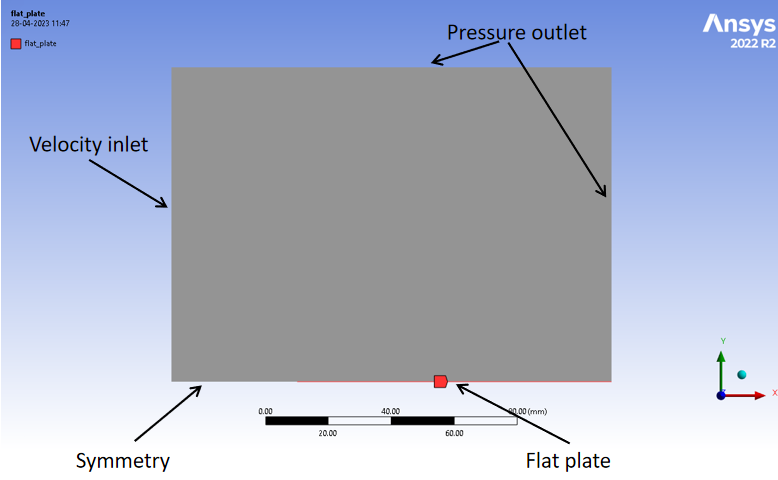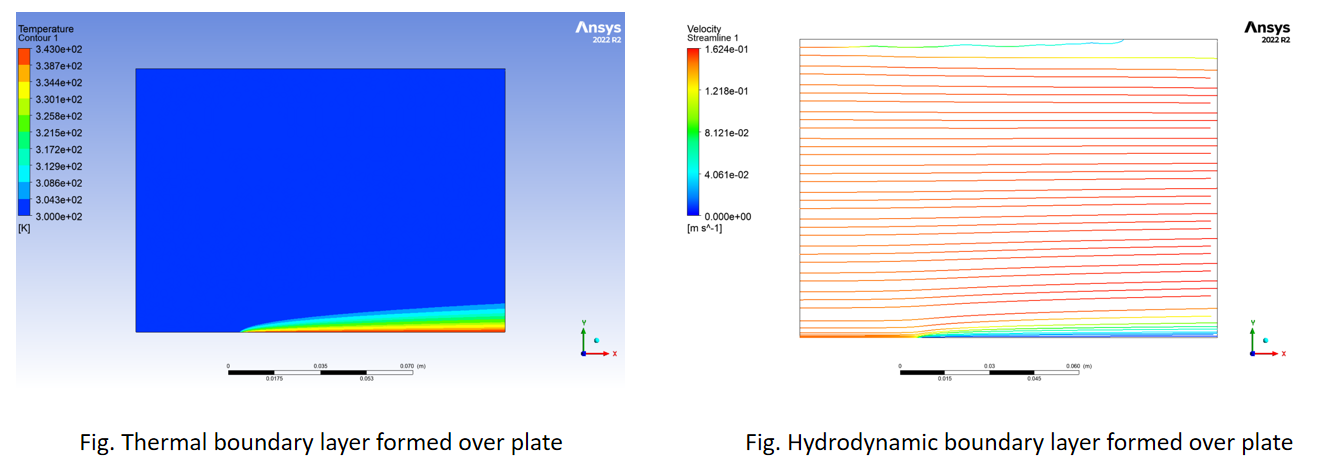
Numerical simulation and analysis of boundary layer over a flat plate.
Introduction:
Comprehending the characteristics of boundary layers is essential in diverse engineering fields, ranging from aerodynamics to heat transfer. This analysis explores the CFD analysis of the boundary layer over a flat plate using ANSYS software. Through the analysis of the physics governing the movement of fluids and the distribution of temperature, the objective was to acquire a deeper understanding of the complex interplay between the motion of liquids and solid surfaces.
Geometry and Setup:
The simulated flat plate had length of 0.1 meters. Using ANSYS-Fluent, we employ the energy equation and select a laminar viscous model to accurately capture the flow phenomena. . The fluid material is air, while the solid material represents aluminum.
Boundary Conditions:
At the inlet boundary, a velocity inlet condition is imposed with an X-velocity of 0.15 m/s and a temperature of 300 K, reflecting the incoming flow properties. At the outlet, a pressure boundary condition is applied with a gauge pressure of 0, allowing the flow to exit freely. The temperature of the flat plate is set to 343 K, which represents a practical thermal boundary condition. The solution method employed is SIMPLEC, and the solver is pressure-based and steady.

Results and Analysis:
Upon conducting the simulation, we obtain detailed contours illustrating the flow characteristics and temperature distribution over the flat plate. The velocity contours reveal the development of the boundary layer from the leading edge of the plate, with a gradual increase in velocity as the flow progresses downstream. Near the surface of the plate, the velocity profile exhibits a significant gradient, indicative of the boundary layer formation.
Furthermore, the temperature contours depict the thermal boundary layer evolving alongside the velocity boundary layer. The elevated temperature near the plate surface signifies the heat transfer occurring between the fluid and the solid. This temperature gradient induces variations in the fluid properties, influencing the flow dynamics within the boundary layer.
Physics Behind the Phenomena:
The development of the boundary layer can be attributed to viscous effects, where the fluid in direct contact with the solid surface adheres to it due to molecular interactions. As the fluid moves along the surface, the velocity gradually increases, reaching a maximum at the outer edge of the boundary layer. Simultaneously, heat transfer occurs between the fluid and the solid, leading to thermal boundary layer formation.

Post a comment